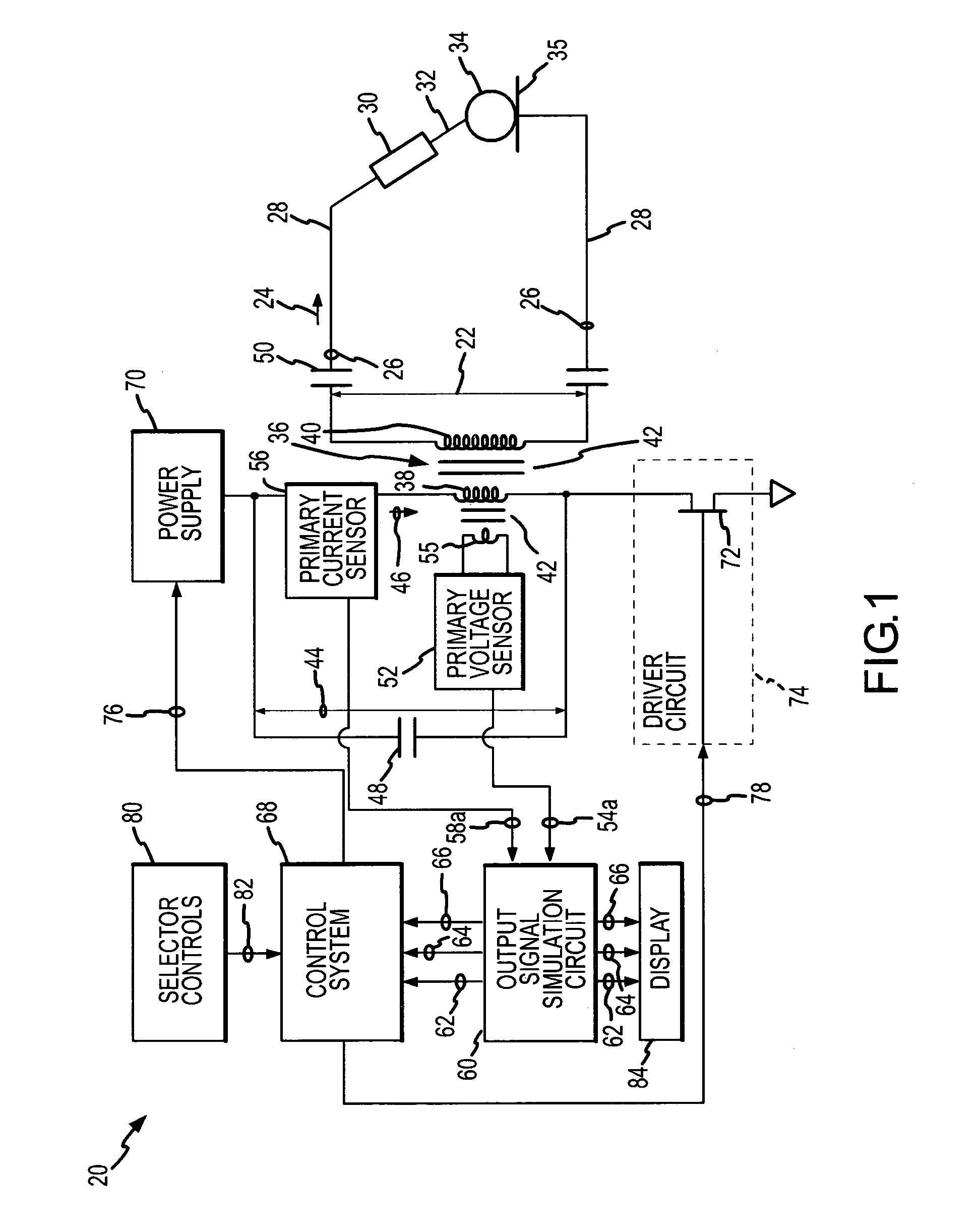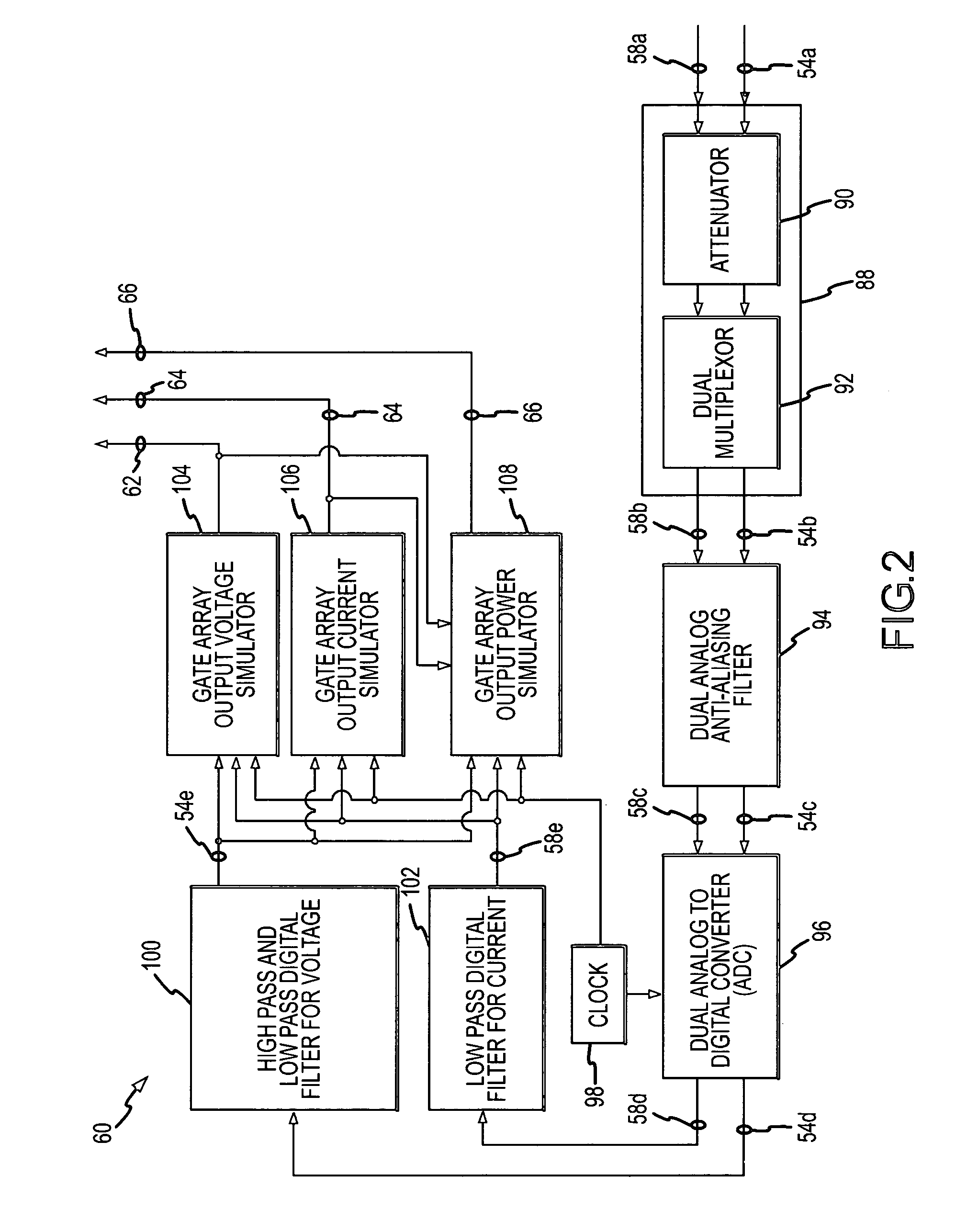Electrosurgical generator and method for simulating output signals
a generator and output signal technology, applied in the field of electrosurgical generators, can solve the problems of reducing the amount of power reaching the tissue, changing the output characteristics of these sensors, and high current may create excess tissue damage, so as to achieve rapid and precise power regulation, the effect of reducing the lag time or phase lag of the control loop
- Summary
- Abstract
- Description
- Claims
- Application Information
AI Technical Summary
Benefits of technology
Problems solved by technology
Method used
Image
Examples
Embodiment Construction
[0024]An electrosurgical generator 20 which incorporates the present invention is shown in FIG. 1. The electrosurgical generator 20 creates and delivers an electrosurgical output signal formed by an output voltage 22 and an output current 24. The electrosurgical output signal is delivered from output terminals 26 of the generator 20 and is conducted over a lead or conductor 28 to an applicator or handpiece 30. The handpiece 30 includes an active electrode 32 through which the output voltage 22 and output current 24 are applied at a surgical site to tissue of a patient 34 by the surgeon manipulating the handpiece 30. A return electrode 35 is connected to the patient 34 a location remote from the surgical site. Another lead or conductor 28 connects the return electrode 35 to the electrosurgical generator 22 to complete an electrical circuit through the patient 34. When applied by the active electrode 32 to the tissue of the patient 34, the output voltage 22 and the output current 24 c...
PUM
 Login to View More
Login to View More Abstract
Description
Claims
Application Information
 Login to View More
Login to View More - R&D
- Intellectual Property
- Life Sciences
- Materials
- Tech Scout
- Unparalleled Data Quality
- Higher Quality Content
- 60% Fewer Hallucinations
Browse by: Latest US Patents, China's latest patents, Technical Efficacy Thesaurus, Application Domain, Technology Topic, Popular Technical Reports.
© 2025 PatSnap. All rights reserved.Legal|Privacy policy|Modern Slavery Act Transparency Statement|Sitemap|About US| Contact US: help@patsnap.com



